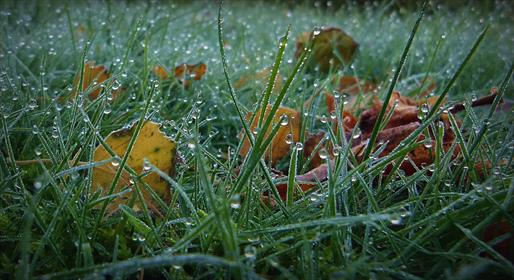
PUMPA - SMART LEARNING
எங்கள் ஆசிரியர்களுடன் 1-ஆன்-1 ஆலோசனை நேரத்தைப் பெறுங்கள். டாப்பர் ஆவதற்கு நாங்கள் பயிற்சி அளிப்போம்
Book Free DemoSignificance of transpiration:
- It is the reason that creates transpiration pull for the transportation of water.
- It provides the water required for photosynthesis.
- It transports minerals from the soil to all the parts of the plant.
- The process of evaporation cools the surface of the leaves.
- It maintains the shape of the cells by keeping them turgid.
Guttation:
Have you ever seen water droplets on the leaves of plants like grass in the early mornings?
Did you ever think of from these droplets have come?
This is due to the process of guttation.

Guttation in grass leaves
When the climate is humid, the excess water present in the plants is exudated in a liquid form due to the root pressure developed. This phenomenon is known as guttation. It occurs through specialised cells known as hyathodes.
Uptake of minerals:
For the additional nutritional requirements, plants solely depend on minerals. Unlike water, minerals cannot be passively absorbed by the roots due to two main factors.
- In the soil, minerals are found as charged particles known as ions which cannot move across the cell membranes.
- The mineral concentration of the soil is usually lower than the mineral concentration of the roots.
Most minerals enter the root via active absorption through the cytoplasm of epidermal cells for these two reasons. This necessitates the use of ATP as a source of energy. Then, via transpiration pull, it is delivered to all areas.
Translocation of mineral ions:
Minerals are remobilised from older, dying leaves and transferred to younger, healthier leaves. Deciduous plants exhibit this phenomenon. Elements such as phosphorus, sulphur, nitrogen, and potassium are easily mobilised, whereas calcium is not. Between xylem and phloem, there is a small amount of material exchange.
Reference:
https://www.flickr.com/photos/april-mo/10801804075/